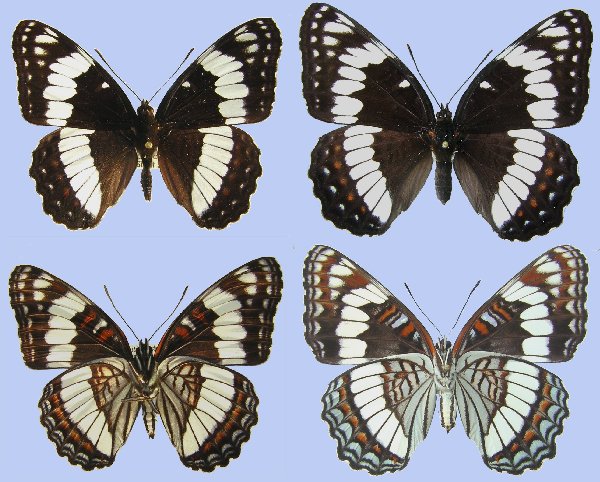Limenitis weidemeyeri latifascia

Photo Life History: Limenitis weidemeyeri latifascia
Habitat: Mountain Canyons; Valley Lakes & Rivers;
Host Plants: Salix amygdaloides; Salix exigua; Populus tremuloides; Populus angustifolia; Amelanchier utahensis; Prunus virginiana
Suitable Lab Host Plants: Any convenient willows, cottonwoods, aspens, or cherries.
How to Find Female Butterflies: Click here. (L. weidemeyeri females can be found in the same habitat as the males; but can be spotty. If you spend enough time roaming the habitat (sometimes it takes a few hours), you can spot a female nectaring, or patrolling down a canyon.)
How to Care for Live Female Butterflies: Nectaring techniques
Methods of Female Oviposition: Open Screen Cages; High Humidity Cages; expose caged females to filtered sunlight.
How to Find Eggs: Look on tips of leaves
How to Hatch Eggs: Keep egg on original leaf; keep humid!
How to Find Caterpillars in the Field: Isolated host plants; perches on tips of leaves; hibernacula
How to Find Pupae in the Field:
Caterpillar setups: Semi-closed terrariums
Larva to Pupa: Caterpillar silks to leaf or twig; creates and attaches cremaster; hanging as a J before pupating.
Number of Broods per Year: 1-3 depending upon location.
Overwintering Stage: Third instar in hibernaculum
Overwintering Strategies: Wine Cooler; Pinning Hibernacula to host; Alpine Overwintering Technique
Post-Hibernation Strategies: Post-Diapause Limenitis Third Instar Caterpillars
Avoiding Diapause Techniques: Expose second instar larvae to 24 hours of light. Second and third instar larvae found in the wild have already made the diapause/no diapause decision. If this is the case, see previous section on Post-Hibernation Strategies.
Disease Prevention: Change out host plant and remove frass every five days.
Emergence: Emergence Container
Field Notes: Most Limenitis that are reared with a 24 hour photoperiod will not diapause. Freshly molted 2nd instars are especially sensitive to monitoring photoperiod. First instars do not. In habitats where the hosts are scattered or confined, ova and small larvae can be collected. During the late fall or winter, when most of the leaves have fallen, it is not too difficult to spot hibernacula. As is true with other Limenitis species, females oviposit well in a cage with high humidity and/or exposed to filtered sunlight.

